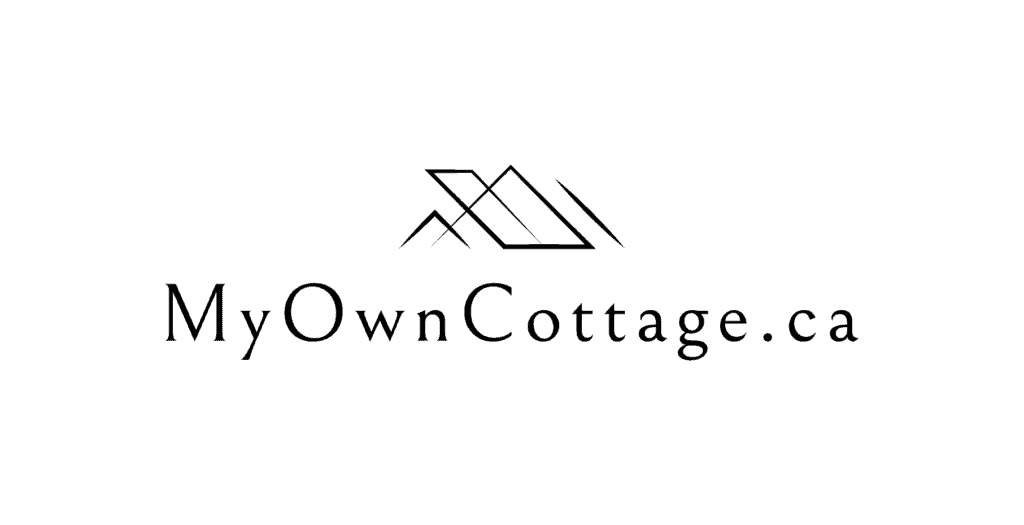Prefab Homes vs. Traditional Homes in London
Discover the differences with prefab homes vs. traditional homes in London, Ontario to choose the right fit for your lifestyle.
🏠 Prefab Homes vs. Traditional Homes in London: A Clear, Trusted Guide for Homebuyers
Understanding prefab homes vs. traditional homes in London comes down to this: If you need a high‑quality new home fast with strong energy efficiency, prefab houses (modular/panelised) can cut build time by more than half versus site‑built homes.
In London, Ontario, the housing market is evolving quickly.
With prices rising, labour shortages in construction, and a growing demand for energy-efficient homes, many buyers are considering prefab homes in London, Ontario.
These represent a compelling and advantageous alternative to conventional site-built houses.
High-quality prefabricated houses promise shorter build times, better energy efficiency, and a variety of customization options—but they aren’t a one-size-fits-all solution.
This guide compares prefab and traditional homes in London, Ontario, so you can choose the right construction method for your budget, design preferences, and lifestyle.
📊 Understanding London, Ontario’s Housing Landscape
London is one of the fastest-growing cities in Ontario, attracting both first-time buyers and downsizers from the GTA.
Housing demand is outpacing supply, driven by population growth, student housing needs, and the city’s role as a healthcare and education hub.
At the same time, Ontario’s Building Code and Energy Efficiency standards are pushing homebuilders toward better insulation, airtightness, and sustainable design.
Prefabricated and modular homes fit perfectly into this trend, often exceeding code requirements.
🏗️ What Are Prefab Homes in London, Ontario? A Buyer’s Guide
Prefab homes London Ontario—short for prefabricated homes—are houses built in a controlled factory environment and then transported to your lot for on-site assembly.
This method reduces weather delays, improves quality control, and often speeds up the construction process compared to traditional site-built homes.
Main Types of Prefab Homes in Ontario
Modular Homes – Fully built in large sections (modules), transported to the site, and assembled by crane.
Panelized Homes – Wall, floor, and roof panels are pre-cut in the factory, then shipped and assembled on-site.
Kit Homes – All structural components are packaged for assembly, often by the homeowner or a local contractor.
Certification & Quality Standards
In Ontario, reputable prefab builders:
Follow CSA-A277 factory certification standards for modular and panelized homes.
Comply with the Ontario Building Code (OBC) for safety, structure, and energy performance.
Provide Tarion New Home Warranty coverage for consumer protection.
Undergo municipal inspections, just like traditional homes.
🔍 Learn every stage of the process of building a prefab home in London, from budgeting and design to final inspections.
Expert Insight from a Tarion-Registered Home Builder in London, Ontario
“Prefab construction has come a long way in Ontario,” says Mark Hughes, a Tarion-registered home builder with over 20 years’ experience.
“With CSA-certified systems, Energy Star® features, and precise engineering, we can deliver a custom home in 16–20 weeks—about half the time of a conventional build—while meeting or exceeding OBC standards.”
What Are Traditional Homes in London, Ontario? A Complete Overview
Traditional homes—also called site-built homes—are constructed entirely on location using materials like timber, brick veneer, and concrete block.
In London, Ontario, these range from classic red-brick family homes in Old North to modern suburban builds in areas like Foxfield and Summerside.
Build time: Typically 9–18 months
Materials: Lumber framing, brick/stone veneer, drywall, roofing
Styles: Colonial, Craftsman, contemporary, and more
While traditional builds allow unlimited customization, they are more prone to delays from weather, trades shortages, and supply chain disruptions.
⚖️ Prefab vs. Traditional Homes – Quick Comparison
| Feature | Prefab Homes | Traditional Homes |
|---|---|---|
| Construction Time | 12–20 weeks from foundation to move-in | 9–18 months |
| Cost Predictability | High—factory scheduling reduces overruns | Moderate—subject to delays and labour costs |
| Energy Efficiency | Often exceeds OBC and qualifies for Energy Star® | Varies—older builds may require retrofits |
| Customization | High within modular limits | Unlimited |
| Resale Value | Growing acceptance in Ontario market | Long-established trust |
| Logistics | Requires transport of modules | Standard delivery of materials |
📲 Call us directly for honest answers and personalized guidance—no pressure, just expertise you can trust: (705) 345-9337
📋 Planning & Building Approvals in London, Ontario
Before starting any new home build:
Zoning Approval – Check the City of London’s zoning by-laws for your lot.
Building Permit – Apply through City of London Building Services.
Ontario Building Code Compliance – Covers structure, fire safety, plumbing, and energy standards.
Tarion Warranty Registration – All new homes in Ontario must be covered by a Tarion warranty.
Tip: In rural areas around London, ensure your lot has adequate road access for modular house delivery.
💰 Financing and Insurance for Prefab Homes in London, Ontario
Mortgages: Most Canadian lenders, including RBC, TD, and BMO, finance prefab homes in London Ontario if they meet CSA standards and OBC compliance.
CMHC Insurance: Available for qualified borrowers.
Home Insurance: Premiums are comparable to site-built homes once the insurer confirms code compliance and warranty coverage.
Most lenders finance CSA-certified prefab homes that meet the Ontario Building Code and are covered by a Tarion warranty.
💡 You can explore verified financing options for prefab homes in London, Ontario to compare rates, terms, and lender requirements from trusted providers.
🌱 Prefab Homes London Ontario: Energy Performance, Eco-Friendly Design, and Sustainability
Modern prefab construction excels in thermal performance.
Tight building envelopes, precision engineering, and advanced insulation mean lower heating and cooling costs.
Ontario prefab homes can qualify for:
Energy Star® for New Homes certification
Enbridge Gas Home Efficiency Rebate programs
Net Zero Ready standards for reduced carbon impact
🔍 Prefab Homes London Ontario vs. Traditional Homes: Key Advantages and Disadvantages
Prefab Homes London Ontario – Pros
Faster build and occupancy: Most CSA-certified prefab homes can be completed in 16–20 weeks, compared to 9–12 months for traditional builds.
Consistent quality materials: Built in a controlled factory environment, reducing weather delays and defects.
Strong energy efficiency: Often exceed Ontario Building Code requirements and qualify for Energy Star® certification.
Lower waste and environmental impact: Factory precision cuts down material waste by up to 30% compared to on-site construction.
Prefab Homes London Ontario – Cons
Size and layout limits: Design flexibility is high but still bound by module transport rules and road access.
Market familiarity: Some buyers and appraisers are still learning the category, though acceptance is growing quickly in Ontario.
Delivery logistics: Requires suitable road and crane access to your lot for large modules.
Traditional Homes London Ontario – Pros
Unlimited floor plans: Full design freedom for custom layouts, architectural styles, and finishes.
Established market trust: Long-standing familiarity among buyers, lenders, and insurers.
Flexible for challenging lots: Can be adapted to irregular shapes, steep grades, or heritage requirements.
Traditional Homes London Ontario – Cons
Slower timelines: Weather, labour shortages, and permit delays can extend builds to 9–18 months.
Cost risk: More exposure to budget overruns due to unpredictable site conditions and material price fluctuations.
Energy performance: Many traditional builds meet but don’t exceed code; older homes may require retrofits to match prefab efficiency.
📍 Prefab Homes London Ontario: Local Case Studies and Homeowner Experiences
Case Study 1 – Modular Efficiency in Byron:
In Byron, a young couple chose a CSA-A277–certified prefab home to fast-track their move-in date.
Their custom modular build featured an open-concept floor plan, oversized windows for a sun-filled living room, and an Energy Star®–rated HVAC system.
Timeline: From permit approval to move-in took 18 weeks, about half the time of a traditional build.
Cost savings: Over $30,000 less than a comparable site-built home at $225/sq. ft.
Warranty: Covered under Tarion New Home Warranty, ensuring protection against structural defects.
Case Study 2 – Traditional Heritage in Old South:
In Old South, a family restored a 1930s site-built home, preserving its original interior design and heritage woodwork.
The renovation included triple-pane windows, spray foam insulation, and a high-efficiency furnace to meet Ontario Building Code energy standards.
Goal: Maintain architectural charm while improving comfort and efficiency.
Result: Reduced annual heating costs by an estimated 15% while retaining full heritage appeal.
Market value: Increased property value thanks to a balance of historic character and modern performance.
➡️ Your Next Steps After Comparing Prefab vs. Traditional
Both prefab and traditional homes have advantages.
However, only prefab offers speed, predictable costs and truly innovative designs.
Ready to explore your options with our prefab homes London?
Simply book a free consultation or call us directly today.
🧑💼 Request a Free Consultation
📲 Call Us Directly: (705) 345-9337
✅ Ontario-Built | ⚡ Energy-Efficient | 🏡 Fully Customizable | 🚚 Fast Delivery
Alternatively, for your convenience, you can also simply fill out the contact form below and we’ll get back to you soon! 👇
❓ FAQ: Prefab Homes vs. Traditional Homes in London
What are the disadvantages of prefabricated homes?
Prefab homes can face transport limits for large modules, restricted customization outside modular layouts, and require suitable road access for delivery. In Ontario, financing may need CSA-A277 certification and Tarion warranty coverage for lender approval.
How long do prefab homes last in Ontario?
When built to CSA standards and Ontario Building Code requirements, prefab homes can last 50 years or more—matching the lifespan of traditional site-built houses, provided they’re maintained properly.
Are modular homes worth it in Canada?
Yes—modular homes offer faster build times (16–20 weeks), predictable costs, and strong energy efficiency. In London, Ontario, they can cost $150,000 less than traditional builds of similar size.
What is the life expectancy of a prefabricated building?
A well-built, CSA-certified prefabricated building can last five decades or longer. Lifespan depends on build quality, proper installation, and routine maintenance.
Prefab homes vs. traditional homes in London Ontario: Which is cheaper?
Prefab homes in London, Ontario cost about $180–$250 per sq. ft., while traditional builds average $225–$320 per sq. ft. This can save buyers $60–$70 per sq. ft., or over $150,000 on a 1,500 sq. ft. home.
Modern prefab homes vs. traditional homes in London Ontario: What’s the difference?
Modern prefab homes are built in controlled factories, ensuring quality, energy efficiency, and faster timelines. Traditional homes offer unlimited design freedom but longer construction times and potential cost overruns.
Are prefab homes more energy-efficient than traditional homes?
Often yes—Ontario prefab homes feature tight building envelopes, precise insulation, and advanced HVAC systems, lowering heating and cooling costs compared to many traditional builds.
Are prefab homes sustainable?
Prefab construction generates less waste, recycles materials efficiently, and supports eco-friendly upgrades like solar panels, triple-pane windows, and net-zero-ready designs.
Can prefab homes appreciate in value?
Yes—modern prefab homes in good locations appreciate similarly to traditional homes, especially when maintained well and built to high standards.
Can you get a mortgage for a prefab home in Ontario?
Yes—major lenders finance prefab homes that meet CSA certification, Ontario Building Code compliance, and Tarion warranty registration.
Do prefab homes require a building permit in London Ontario?
Yes—just like traditional builds, prefab homes require municipal building permits, inspections, and zoning approval before construction begins.
Are cheap prefab homes a good idea?
Entry-level prefab homes can be cost-effective without sacrificing quality if built by a Tarion-registered, CSA-certified builder. Avoid uncertified options to protect resale value and durability.

